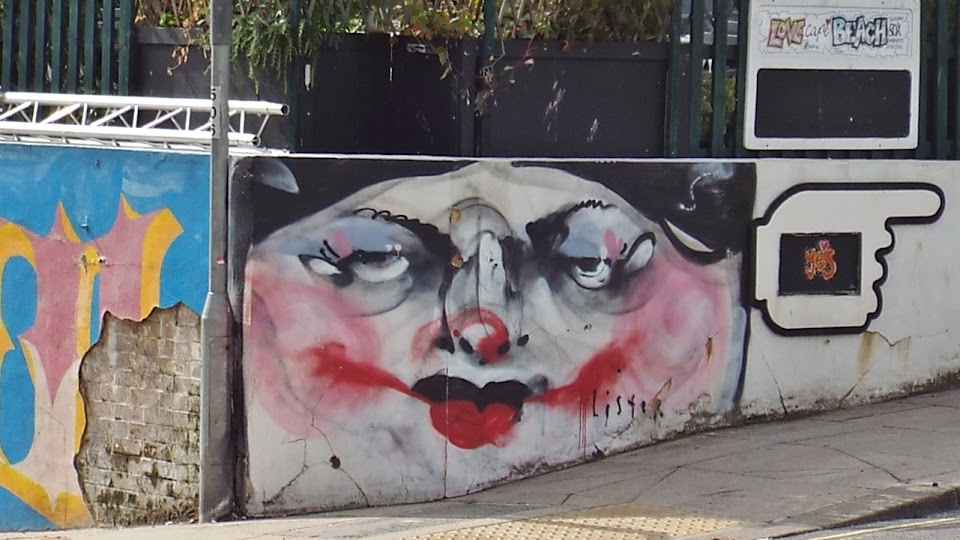A major retrospective
of the life and work of Georgia O'Keeffe is in progress at London’s Tate Modern,
the largest ever exhibition of this artist outside the USA. This also marks the
centenary of her first ever exhibition, when some of her charcoal drawings were
exhibited by Alfred Stieglitz at his 291 gallery in New York.
 |
| Georgia O’Keefe poses outdoors in Mexico in 1960 with a canvas from her Pelvis Series Red with Yellow. Photograph: Tony Vaccaro/Getty Images |
She is
regarded as one of the USA’s greatest 20th century artists, but her
work is hardly ever seen in the UK and no work by her is in any public
collection here. This large exhibition includes her 1932 painting ‘Jimson
Weed/White Flower No. 1’, which became the most expensive painting by a woman
artist ever sold at auction when Sotheby’s sold it for $44,405,000 on November
20, 2014. This painting is used on posters and banners for the exhibition.
Georgia
O'Keeffe rejected the classification ‘woman artist’. Always aware of the
disadvantages that she suffered as an artist, she nonetheless said,
 |
| O'Keeffe, 'Line and Curve' 1926 |
“Men put me down as the best woman
painter…
…I think I’m one of the best painters.”
…I think I’m one of the best painters.”
She was right as this exhibition shows. There are vertical, dark and glowing skyscrapers of New York; beautifully simple, hard edged almost white abstractions of the mid 1920's; gloriously vivid red oriental poppies from the late 20's; mysterious abstracted trees painted at Lake George; there are red hills, flowers in more tones of blue and pink than you can imagine; there are white skulls and adobe farms and above all there are her interpretations of her beloved New Mexico landscape.
Not all is in vivid colour. Her early,
monochrome charcoal drawings are a revelation. In 1915 she had set herself a
target of working only in charcoal until the medium could no longer match her
aspirations. These drawings took her a long way. Georgia O’Keefe is best known
for her dramatic paintings of flowers, skulls and landscapes, but the
chronology here shows how very early in her career she was already deeply into
abstraction, the earliest drawings from 1915 are pure, simplified abstraction.
Hers are not the intellectualized abstractions of artists such as Mondrian or I. Rice Pereira, O'Keefe's abstrctions come from feelings and internalized explorations of where a line or form can be
driven, how far a landscape can be reduced to its vital sensations.
These early drawings were the ones shown by Alfred Stieglitz
in April 1916. Photographer and gallerist Stieglitz, who became her husband, recognised her unique vision immediately. He was a singular influence on her life though he did not tell her what, or how,
to paint. She lived more in New Mexico during their unusual marriage, while he remained
in New York, exhibiting her work until his death in 1946.
The Tate exhibition shows some work by Stieglitz and other
artists in relation to O’Keefe’s story, though in most of the rooms O’Keefe’s
work is predominant. Including these other artists helps show the context in
which O’Keefe was working. The exhibition also helps to dispel some of the
mythology about the sexual nature of her work.
This is an important and splendid exhibition of an important
and interesting artist. It’s on at Tate Modern, London until October 2016, then
tours to Vienna and Toronto. Don't miss it.
**
links:-
http://www.tate.org.uk/whats-on/tate-modern/exhibition/georgia-okeeffe
https://www.theguardian.com/artanddesign/2016/jul/04/georgia-o-keeffe-review-tate-modern-retrospective
http://www.thecityreview.com/okeeffe.html

Hi
ReplyDeletethanks for this blog!
Best Exterior Painting Services Abbotsford